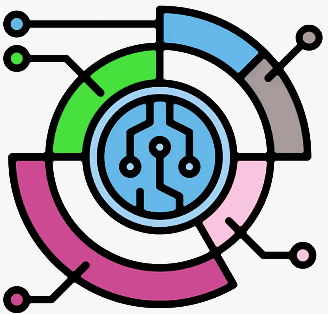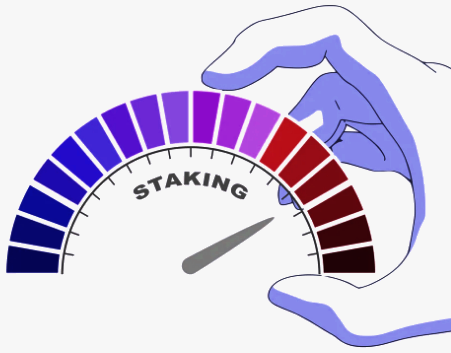Accredited InvestorsAltcoinAnatoli UnitskyAnti-Money Laundering (AML) In CryptoAPIArbitrageArtCoin TokenArticle DirectoryASICAuction Terminology GlossaryBasics of Stock Market InvestingBear MarketBest Crypto Payment Provider In the WorldBitcoinBlockchainBlockchain ConfirmationBlockchain Consensus MechanismBlockchain ForkBlockchain GlossaryBored Ape Yacht ClubBuild a Business That OutperformsBull MarketBuying SkyWay SharesByzantine Fault Tolerance (BFT) ExplainedCasascius CoinCentral Bank Digital Currency (CBDC)Centralized Crypto ExchangeCoinCoinsetCold WalletCollateralCommodity Futures Trading Commission (CFTC)Cross-Chain TechnologyCRUCrypto ExchangeCrypto GlossaryCrypto JokesCrypto Terms to KnowCrypto TickerCryptocurrencyCryptographyCryptojackingCryptounit BlockchainCryptounit GlossaryCryptounit ProgramdApp (Decentralized Application)Dead CoinDecentralized Exchange (DEX)Decentralized Finance (DeFi)Difference Between Bitcoin and EthereumDifferent Ways of Investing MoneyDigital CurrencyDistributed LedgerDo Your Own Research (DYOR)Dollar Cost Averaging (DCA)Dow Jones Industrial Average (DJIA)EncryptionERC-20ERC-721EthereumEvoScentFear Of Missing Out (FOMO)Fear, Uncertainty and Doubt (FUD)Fiat MoneyFNT Fintech CompanyGenesis BlockGlobal Unit PayGlossary of Banking TermsGlossary of Business TermsGlossary of Financial TermsHalvingHODLHot WalletHow Do I Start InvestingHow Rich is Satoshi Nakamoto?How to Create a BlockchainHow to Find Private InvestorsHow to Get Into FintechHow to Program Smart ContractsI Am Thrilled to Be a Part of This Global ProjectInitial Coin Offering (ICO)Initial Public Offering (IPO)Initial Token Offering (ITO)Innovation Basalt TechnologyInnovative Transportation TechnologiesInternational Bank Account Number (IBAN)Investing in Gold Mining StocksInvesting in Gold MiningJagerJoy of Missing Out (JOMO)Know Your Customer (KYC)LedgerLiquidity in CryptocurrencyMaker and Taker Fees in Crypto TradingMarket Capitalization (Market Cap)Meme CoinMetal Credit CardMetaMaskMillenials Now Have Access to Generational WealthMy Best Investment EverNew Digital EvolutionNFT GlossaryOff-Chain TransactionsOn-Chain TransactionsOpen Edition NFTPeer-to-Peer (P2P)Personal Loan GlossaryProbably the Best STO on the MarketProof of Stake (PoS)Real Estate Glossary of TermsReal Estate Investing GlossaryRebase TokenSecurities and Exchange Commission (SEC)Security Token ExchangesSecurity Token Offering (STO)Soulbound Decentralized Identities for Security TokensSoulbound ID Launch by Stobox Proves a SuccessSoulbound TokensStoboxStock Market GlossaryTestimonialsTether Platform and Token (USDT)UnitEx ExchangeUnitsky String TechnologiesUNTBUSDUValidatorWe Started Investing When We Were 25What are Blue Chip NFT?What are Blue Chip Stocks?What are Crypto Assets?What are Crypto Smart Contracts?What are CryptoPunks NFT?What are Digital Assets?What are Digital Collectibles?What are Gas Fees?What are Gas Wars?What are Hashmasks?What are Non Fungible Tokens?What are Non-Sufficient Funds (NSF)?What are Soulbound Tokens (SBT)?What are Stablecoins in Crypto?What are Transactions Per Second (TPS)?What are Utility NFTs?What are Utility Tokens?What Does Burning Crypto Mean?What Does Diamond Hands Mean?What Does Paper Hands Mean?What Does To The Moon Mean?What Does WAGMI Mean?What Happened to Satoshi Nakamoto?What is a 51% Attack?What is a Baby Boomer?What is a Backlink?What is a Banner?What is a Barcode?What is a Bid-Ask Spread in Crypto?What is a Block in Blockchain?What is a Block Reward?What is a Blockchain Address?What is a Blockchain Node?What is a Blockchain Oracle?What is a Blog?What is a Bond?What is a Bot?What is a Broker?What is a Business Accelerator?What is a Cash Cow?What is a Commercial Bank?What is a Commodity?What is a Con?What is a Credit?What is a Credit Limit?What is a Credit Rating?What is a Crypto Airdrop?What is a Crypto Bridge?What is a Crypto Scam?What is a Crypto Token?What is a Crypto Wallet?What is a Crypto Whale?What is a Crypto Winter?What is a Cryptocurrency Public Ledger?What is a Cryptocurrency Roadmap?What is a DAO?What is a Dark Pool?What is a Day Trader?What is a Dead Cat Bounce?What is a Default?What is a Derivative?What is a Digital Credit Card?What is a Fiscal Quarter?What is a Fungible Token?What is a Governance Token?What is a Grace Period?What is a Hard Fork?What is a Hot Wallet?What is a Hybrid Blockchain?What is a Hybrid PoW/PoS?What is a Joint Account?What is a Market Cap?What is a Merkle Tree in Blockchain?What is a Mining Farm?What is a Nonce? What is a PFP NFT?What is a POS System?What is a Prepaid Card?What is a Private Blockchain?What is a Private Key?What is a Public Blockchain?What is a Public Key?What is a Reserve Currency?What is a Ring Signature?What is a Routing Number?What is a Rug Pull in Crypto?What is a Safe Deposit Box?What is a Satoshi?What is a Security Token?What is a Seed Phrase?What is a Shitcoin?What is a Sidechain?What is a Soft Fork?What is a Spot Market?What is a State Bank?What is a SWIFT Code?What is a Tax Identification Number (TIN)?What is a Time Deposit?What is a Transaction Account?What is a Variable Interest Rate?What is a Virtual Assistant (VA)?What is a Virtual Card?What is a Virtual Currency?What is a Visa Card?What is a Whitelist in Crypto?What is a Whitepaper?What is Accounts Payable (AP)?What is AMA in Crypto?What is Amortization?What is an Accrual?What is an ACH Transfer?What is an Actuary?What is an Addendum?What is an Algorithm?What is an Angel Investor?What is an Annuity?What is an Asset?What is an ATM?What is an Atomic Swap?What is an Audit?What is an Avatar?What is an EIN?What is an Embargo?What is an Entrepreneur?What is an IDO (Initial Dex Offering)?What is an Interest Rate?What is an Internet cookie?What is an Investment Bank?What is an NFT Drop?What is an NFT Floor Price?What is an Ommer Block?What is an Orphan Block?What is an Outstanding Check?What is an Overdraft?What is Artificial Intelligence (AI)?What is B2B (Business-to-Business)?What is B2G (Business-to-Government)?What is Bartering?What is Bitcoin Dominance?What is Bitcoin Pizza Day?What is Blockchain Immutability?What is Blockchain Used For?What is BRICS?What is Business-to-Consumer (B2C)?What is C2C (Customer to Customer)?What is Capitalism?What is Catfishing?What is CFD Trading?What is Check Kiting?What is Cloud Mining?What is Communism?What is Content Marketing?What is Decentralization in Blockchain?What is DeFi in Crypto?What is Delisting?What is Depreciation?What is Digital Marketing?What is Diversification?What is Double Spending?What is Dumb Money?What is Dumping?What is Earnings Per Share (EPS)?What is Economics?What is Email Marketing?What is Equity?What is Etherscan?What is Fintech?What is Foreign currency?What is Forex?What is Fundamental Analysis (FA)?What is GameFi?What is Generative Art NFT?What is Gwei?What is Hard Currency?What is Hash Rate?What is Hashing in Blockchain?What is Inflation?What is Initial Game Offering (IGO)?What is Interest?What is Interest Income?What is Mainnet?What is Mastercard?What is Metaverse in Crypto?What is Mining in Cryptocurrency?What is Minting NFT?What is Mobile Banking?What is Money Laundering?What is NFT Alpha?What is NFT Metadata?What is NFT Rarity?What is NGMI Meaning?What is Nominal Interest Rate?What is Online Banking?What is Open-End Credit?What is OpenSea NFT Marketplace?What is Personal Identification Number (PIN)?What is Play-to-Earn?What is Polygon?What is Proof of Authority (PoA)?What is Proof of Work (PoW)?What is Public Key Cryptography?What is Pump and Dump?What is Quantum Computing?What is Refinancing?What is Retail Banking?What is Ripple?What is Sharding?What is Slippage in Crypto?What is Smart Money?What is Solvency?What is Soulbound ID?What is SSL?What is Staking in Cryptocurrency?What is Technical Analysis (TA)?What is Testnet?What is the Ask Price?What is the Better Business Bureau (BBB)?What is the Bid Price?What is the Dark Web?What is the InterPlanetary File System (IPFS)?What is the Gold Standard?What is the Lightning Network?What is the Prime Rate?What is the Sandbox?What is the Secondary Market?What is the World Bank?What is Tier 1 Capital?What is Tokenomics?What is TRC-20?What is Universal Banking?What is Unspent Transaction Output (UTXO)?What is Usury?What is Volatility in Crypto?What is Wash Trading?What is Web3?What is Whisper?What is XRP?What is Zero-Knowledge Proof (ZKP)?Who is Beeple?Who is Satoshi Nakamoto?Who is Vitalik Buterin?Why Tokenization is a Safe HavenWhy You Should Try Your Hand at Trading
What is Tokenomics?
- Home
- Cryptounit Glossary
- What is Tokenomics?
Since 2020, the growing popularity of cryptocurrencies has sparked the debate about "tokenomics", a term used to characterize the economics of crypto initiatives.

Tokenomics can account for a significant part of a crypto project's success. But what exactly does that term mean?
What is Tokenomics?
Tokenomics is a term that refers to the economics of a token. It describes the elements that influence the use and value of a token, such as their creation and distribution, supply and demand, incentive mechanisms, and token burning programs. Well-designed tokenomics are important to the success of cryptocurrency companies. Evaluating a project's tokenomics before choosing to invest is crucial for investors and stakeholders.
It is an important concept to consider when making an investment decision since a project with sensible and well-designed incentives to buy and hold tokens over the long term is more likely to perform better than a project that has not developed an ecosystem around its token. A well-constructed platform typically leads to increased demand over time as more investors rush to the project, driving up prices.
Detailed token allocations to stakeholders are now the norm in crypto initiatives. To establish product credibility, it is currently common practice to maintain a vesting term on tokens assigned to venture capitalists or developers. The vesting period locks in developer tokens for a set period of time, protecting investors from pump and dump tactics.
Due to the lack of regulation in the crypto-space, tokenomics is extremely relevant. Since there are no regulations governing cryptocurrencies, tokenomics allows them to be valued based on their real merit rather than how they trade on exchanges.
Key Elements
Tokenomics primarily refers to the structure of a cryptocurrency's economy defined by its designers as an umbrella term for a wide range of elements that impact a cryptocurrency's value. Here are some of the more significant elements to consider when examining the tokenomics of a cryptocurrency.
- Maximum Supply - Maximum supply refers to the quantity of tokens coded to exist during the lifetime of the cryptocurrency. For example, Bitcoin has a maximum supply of 21 million coins. Some tokens have an unlimited supply. Stablecoins like as USDT or USDC have no maximum supply because they are issued based on the reserves backing them. They can theoretically continue to grow indefinitely.
- Circulating Supply - The quantity of tokens in circulation is referred to as the circulating supply. Tokens can be minted or burned, and the price of the token is affected by this.
- Token Utility - This refers to the application of cryptocurrency or the problems it seeks to solve. The most crucial aspect of any cryptocurrency is its utility. If a project has no obvious reason to exist other than memes or price hikes, that's a clear indication that it should be avoided.
- Community - The community passion provides information about the people who have invested their money in the token. Look into their engagement on Twitter and other social media channels. Will they accept the token as part of their identity?
- Token Burns - Many cryptocurrency projects regularly burn tokens, meaning they permanently remove tokens from circulation. When the supply of a token decreases, it is considered deflation. On the other hand, inflation occurs when the supply of a token continues to grow.
- Incentive Mechanisms - Tokenomics include incentive mechanisms, rewards and penalties to encourage or discourage certain behavior among blockchain users. These mechanisms align user interests with network goals and ensure security and stability. Common mechanisms include mining rewards, staking rewards and penalties for malicious behavior. They also play a crucial role in token distribution and circulation, ensuring fair distribution and discourage hoarding. These mechanisms are essential for creating a sustainable and functional token economy, by balancing user incentives and network goals.
What are the Future Developments in Tokenomics?
Tokenomics is the study of how digital tokens are created, distributed, and used within a blockchain network. As blockchain technology and the use of digital tokens continue to evolve, we can expect to see new developments in tokenomics that will shape the way tokens are used and valued.
One area of future development is in the field of token standardization. With the increasing number of tokens being created and used, there is a need for a common set of standards that will make it easier for users to understand and compare different tokens. This will help to improve the usability and adoption of tokens and make it easier for users to move between different blockchain networks.
Another area of future development is in the use of tokens as a form of security. With the increasing popularity of security tokens, we can expect to see more companies issuing tokens that represent ownership in a company or asset, such as stocks or real estate. This will open up new opportunities for investment and create new ways for companies to raise capital.
Non-fungible tokens (NFTs) offer a distinctive tokenomics structure that is based on digital rarity. The tokenization of conventional assets like real estate and artwork may lead to novel advancements in tokenomics in the future.
Final Thoughts
The future of tokenomics holds great potential. Innovative uses of tokens will transform digital assets and their role in the economy. Tokenomics, including creation, distribution and incentives, is key to the success of cryptocurrencies.
Users must understand tokenomics and its mechanisms for informed decision-making. As the crypto market matures, tokenomics will play a larger role in the economy.
Related Articles

What is a Crypto Token?
In the cryptocurrency world, the words "coins" and "tokens" are sometimes used interchangeably, however...

What Does Burning Crypto Mean?
The process of coin burning is relatively simple. When a coin is burned, it is sent to a special address called...

What is Staking in Cryptocurrency?
Staking should not be confused with lending, though it is similar. Decentralized crypto exchanges rely on...
- Home
- Cryptounit Glossary
- What is Tokenomics?